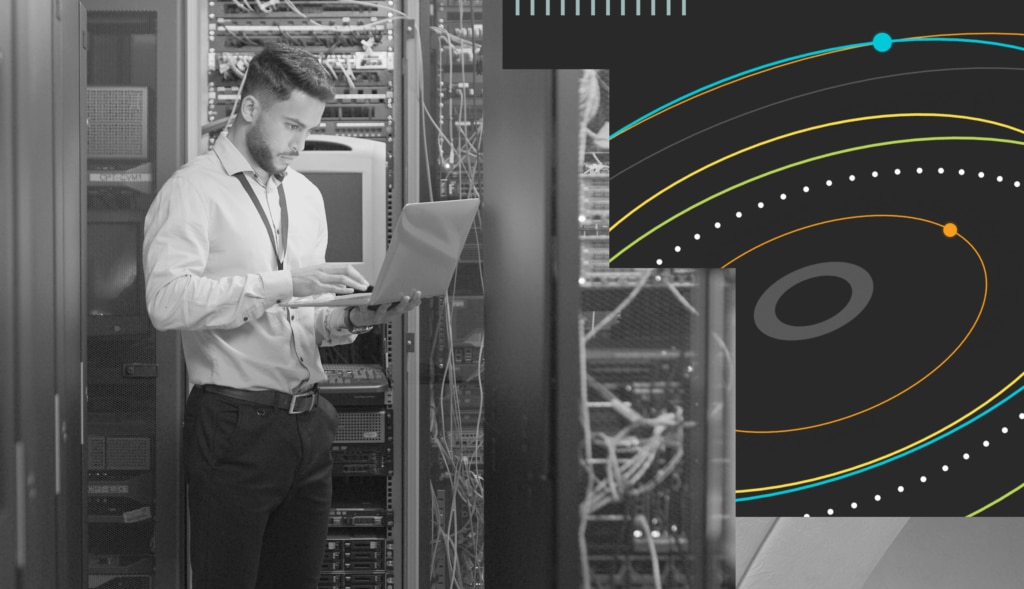Observability is a buzzword that has gained a lot of traction in the IT industry lately. But what does it really mean, and how does it relate to the challenges that modern IT organizations face?
At SolarWinds, we believe that the current analyst definitions of observability are too narrow and APM-focused. They focus too much on the cloud, neglecting critical on-premises assets and restricting where customers can deploy their observability solutions. Most customers we speak with are somewhere on the journey between fully on-prem and fully in the cloud—and will be hybrid for the foreseeable future. This means many analysts’ views do not adequately serve these customers’ needs—nor do they provide visibility into their entire IT infrastructure.
Gartner says observability is “the standard approach to managing application performance in the influential cloud-native ecosystem." Similarly, Forrester defines observability as "the practice of instrumenting applications and infrastructure with metrics, traces, and logs, and analyzing the resulting data to improve performance, reliability, and user experience." Both definitions emphasize the role of telemetry data and application performance monitoring (APM) tools in achieving observability, leaving out the on-prem estate on which most organizations still rely.
In fact, as Gartner itself recently pointed out, 50% of critical enterprise applications will reside outside of centralized public cloud locations through 2027. This aligns with what we hear from customers, and it’s why we prioritize providing a more comprehensive view of observability designed to close the critical visibility gaps that exist in other vendors’ APM-centric offerings. We believe these vendors recognize that reality as they look to move closer to the view we hold.
However, these definitions are insufficient for several reasons. First, they assert that observability is strictly a SaaS offering and assume it’s only relevant for cloud-native systems, which is untrue. Many IT organizations have a hybrid ecosystem with legacy systems, on-premises infrastructure, and cloud environments that must be monitored and managed. Furthermore, an organization may need to host an observability solution on-premises to meet strict security constraints or industry governance and compliance requirements. Observability should not be limited to a specific type of system but rather applied to any system supporting IT service delivery and business outcomes.
Second, they focus too much on the technical aspects of observability, such as metrics, traces, and logs, and neglect the human and organizational aspects. Observability is not just about collecting and analyzing data but also about making sense of it and communicating it to the right stakeholders. Observability should enable IT teams to collaborate, share insights, and act on the data to improve the quality and value of their services.
Third, they overlook the diversity and complexity of the data sources and tools that are required for observability. Telemetry data alone cannot provide a comprehensive and accurate view of the system's state and behavior. IT teams must also collect and correlate data from other sources, such as configuration management, service desk, incident management, change management, and business intelligence. Moreover, IT teams must use different tools for different purposes, such as monitoring, alerting, troubleshooting, root cause analysis, and optimization. Observability should not be tied to a single use case, tool, or vendor but rather integrated with various tools and platforms that support the IT operations lifecycle.
Therefore, we propose a broader and more inclusive definition of observability: Observability is the ability of IT teams to observe and understand the state and behavior of any system that supports the delivery of IT services and business outcomes—regardless of its location—and using data from various sources and tools, and collaborating and acting on the data to improve the quality and value of their services. With SolarWinds, observability is not just about data collection and analysis but also about empowering IT teams to make informed decisions and take proactive measures to enhance their operations.
This definition reflects the reality and needs of our customers, who have complex and diverse IT infrastructures spanning multiple domains, technologies, and vendors. Our customers need a solution that can be hosted on-premises, in the cloud, or both—and provide observability across their entire IT stack, from applications to infrastructure, from cloud to on-premises, from metrics to events, from logs to alerts, from incidents to changes, from performance to availability, from reliability to security, and from user experience to business impact.
This is why we believe SolarWinds is a leading provider of observability solutions for IT operations. Our comprehensive and integrated portfolio of products is designed to help IT teams achieve observability at scale across any system, data source, or tool. With SolarWinds, IT teams can gain visibility, insight, and action into their IT systems and services and deliver better customer and business outcomes. Our solutions are designed to provide a more comprehensive view of your IT infrastructure and streamline operations, improve service quality, and enhance user experience, all at an affordable cost.
Learn more about SolarWinds Observability SaaS (formerly known as SolarWinds Observability)





